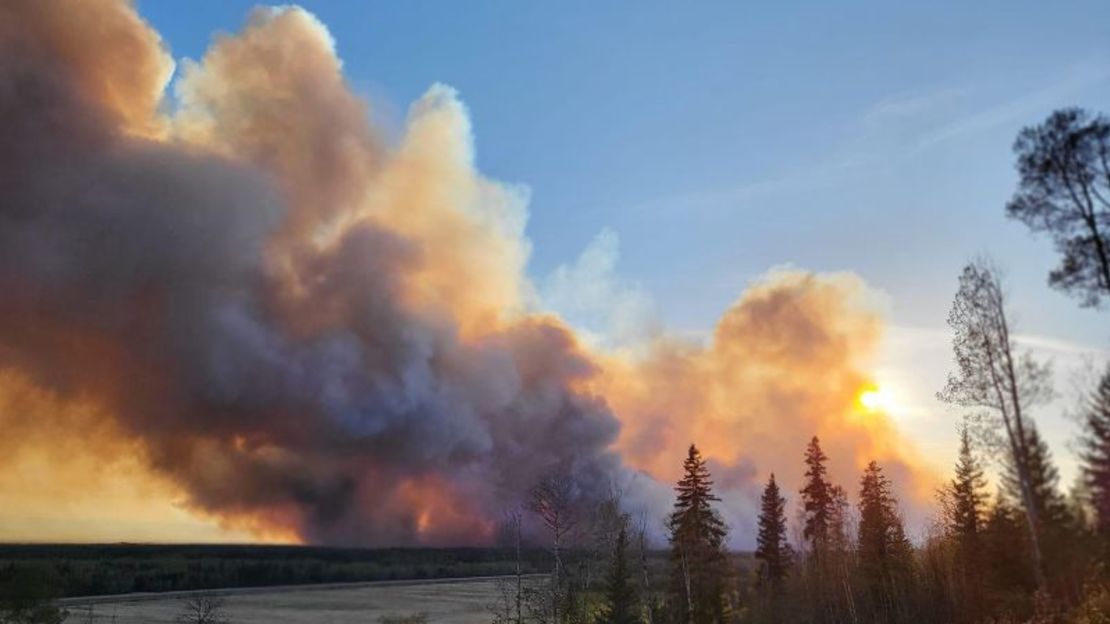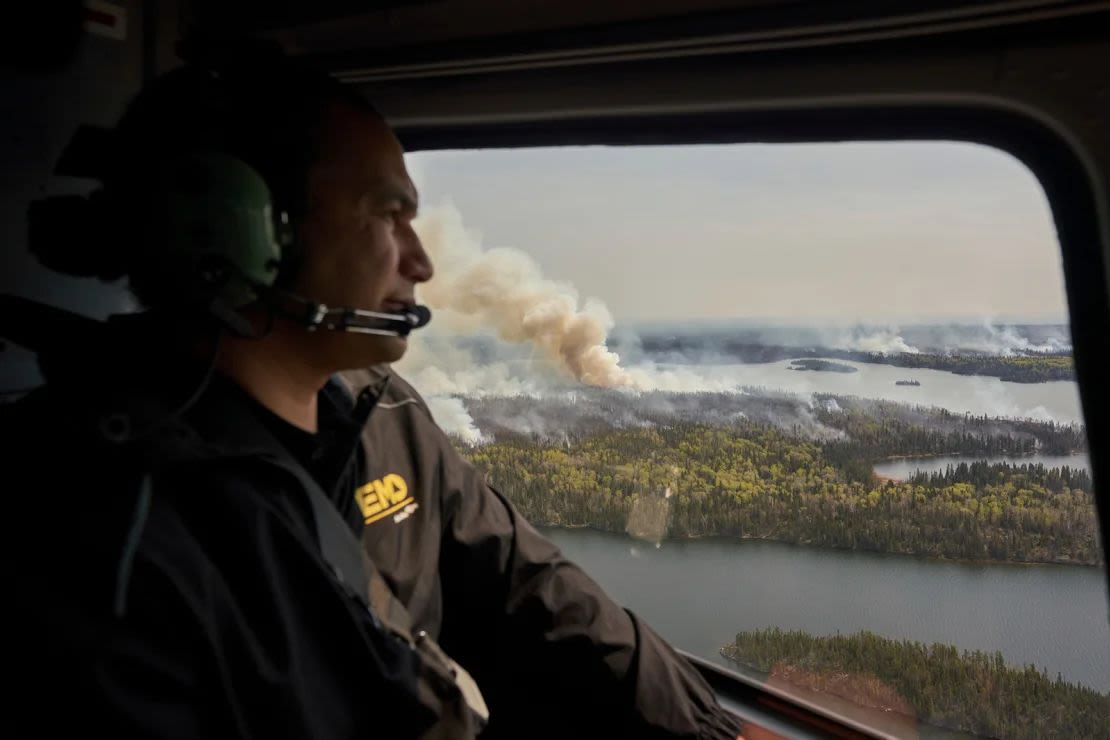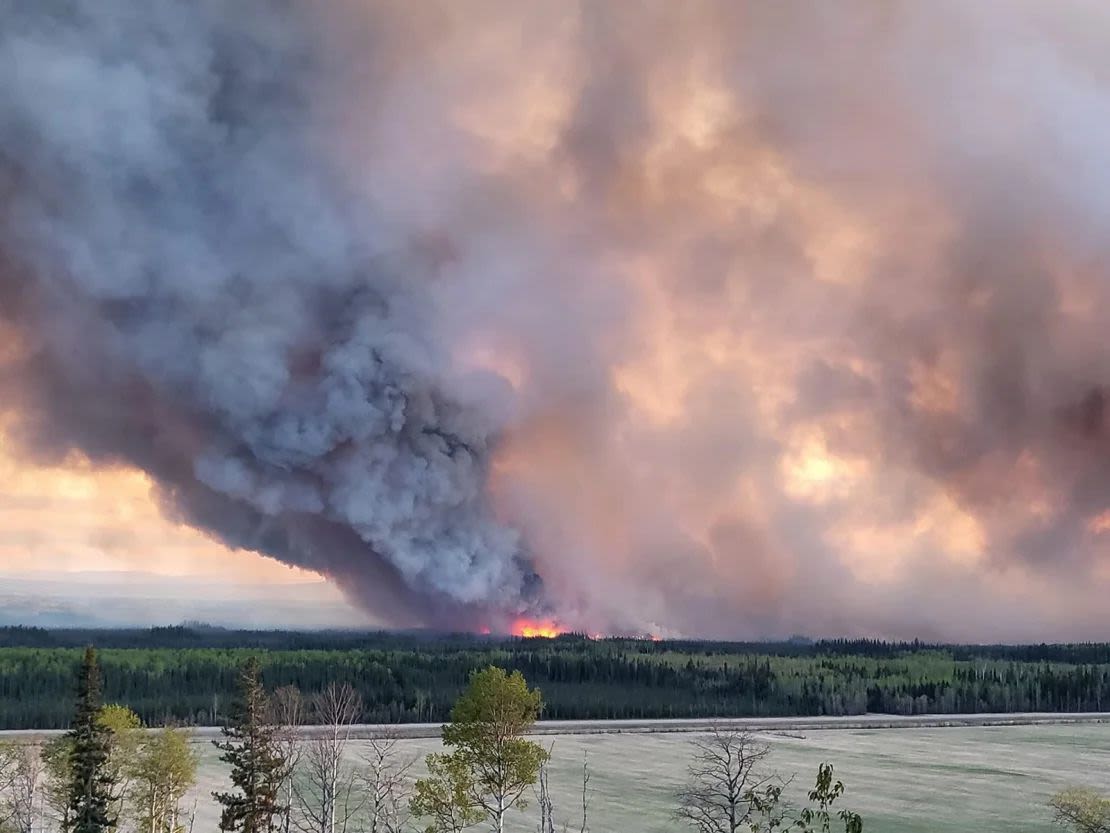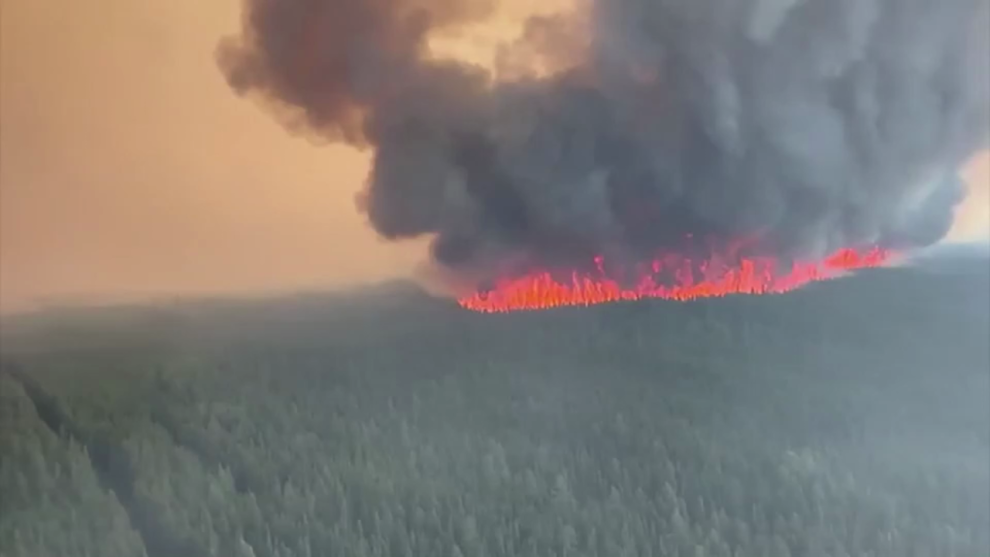() – More than 100 wildfires raging across Canada are polluting the air with smoke and forcing thousands to evacuate as flames engulf communities, including a town still haunted by a catastrophic 2016 blaze nicknamed “The Beast.”
Roads out of Fort McMurray in Alberta were jammed with cars evacuating the region Tuesday as a 20,000-hectare wildfire raged out of control toward the outskirts of the city. The approaching flames may evoke terrifying memories for residents who lived through the 2016 fires, which forced the evacuation of 90,000 people and caused billions of dollars in damage to homes and businesses.
Evacuation orders have been issued for the city’s Prairie Creek, Beacon Hill, Abasand and Grayling Terrace neighborhoods. The rest of the city and several surrounding suburbs have been warned that they may need to evacuate at any time.
Wildfires in Canada cause poor air quality in the United States
A thick pall of smoke is obscuring firefighters’ vision as they battle “extreme fire behavior,” said Alberta wildfire information officer Josee St-Onge. Safety concerns have prompted some firefighters to be pulled from the front.
Extremely dry and windy conditions are driving the explosive growth of many of Canada’s fires. Despite wet weather on the horizon, firefighting will remain a challenge in several provinces through midweek due to gusty winds.

“Unfortunately, these winds are not favorable for us and the fire will continue to advance toward the city until we see a change in wind,” St-Onge said Tuesday.
Authorities sought to calm concerns among residents who vividly remember the 2016 fires, which scorched more than 1,400 acres (560,000 hectares) and destroyed about 2,400 homes and businesses. the most expensive natural disaster in Canadian history.
“I want to acknowledge the anxiety that this brings, certainly to those residents who were here in 2016, and to those for whom this is their first experience and they’ve heard the stories,” said Regional Fire Chief Jody Butz. “We’re confident that we have the resources to defend these areas, but we need people out of harm’s way.”
The country’s wildfire season is moving at a worrying pace, with new blazes breaking out every day and so-called “zombie” smoldering fires reigniting. The 2024 fire season is still not on par with last year’s record-breaking season, but with wildfire behavior worsening in a warming world, it’s no wonder Canadian firefighters are warning of an “explosive” season that could rival last year’s.
Dangerous smoke from the wildfires has also been drifting into the United States and reducing air quality.
Degraded air quality levels were observed Tuesday night from the Dakotas to Oklahoma. The central United States will remain the focal point of Canadian smoke at least through midweek.
Multiple fires have grown in size across several provinces, forcing thousands of Canadians to flee their homes with children, pets and bags full of essential items and prized possessions in tow.
“This is a very difficult time for people who have been asked to leave their homes, their belongings and their community behind without the certainty of what will be left behind when they return,” Manitoba Premier Wab Kinew said in a statement. release this Tuesday.
Manitoba first responders are battling one of Canada’s largest wildfires, which has consumed at least 31,565 hectares and had advanced within a radius of 1.5 km from the community of Cranberry Portage on Tuesday afternoon, according to the provincial wildfire service. More than 500 residents had been evacuated from the area and several housing developments had been ordered to be abandoned.

In British Columbia, the fire Parker Lakein the northeast, has spread to nearly 8,500 hectares and was located just over 1.5 km west of the town of Fort Nelson early Tuesday morning. At least 4,700 people in the area are under evacuation orders, including the Fort Nelson First Nation.
Rick Seidel, owner of a local construction and transportation company, told CBC, affiliatewho stayed behind to help fight the flames.
“We had all our equipment ready and all our tankers were loaded. When the call came, we sprang into action,” Seidel told CBC on Monday.
“It’s really bad. It’s a war zone right now,” Seidel said.
Wind gusts are causing fires in Canada, but the seeds of fire activity were sown over the winter and in previous years as the world continues to warm due to human-driven climate change.
“This region has experienced several years of drought, with below-normal snowpack last winter,” said Ben Boghean, a fire behaviour specialist with the BC Wildfire Service. “As a result, our forests in the Fort Nelson area are very receptive to new fires and rapid rates of spread.”
Decreasing snowfall, rising temperatures and worsening droughts are hallmarks of climate change and are projected to continue to cause larger and more intense fires across Canada, According to Environment Canada.

Last year was the most devastating wildfire season on record in Canada, including in British Columbia, where fires razed hundreds of homes and an area the size of Maryland, According to the BC Wildfire Service.
There are more than 130 fires burning across Canada, 43 of which are considered out of control, according to the Canadian Interagency Fire Centre.
Some of the fires are so-called “remnant fires,” also known colloquially as “zombie fires” — the smoldering remains of last season’s epic blazes that burn deep in the ground throughout the winter and reignite when exposed to warmer temperatures in the spring.
“In the past, winter conditions were what put out a lot of remnant fires,” said Bowinn Ma, British Columbia’s minister of emergency management and climate preparedness. “In this case, what we’ve seen is that because of the higher temperatures and persistent drought over the last year, a lot of these remnant fires were not put out as they normally are.”
–’s Mary Gilbert, Eric Zerkel and Robert Shackelford contributed to this report.
















Add Comment